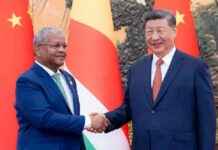In the past decade, U.S.-China trade relations have undergone significant transformations, shaping the global economic landscape and impacting millions of people around the world. From trade disputes to negotiations and agreements, the dynamic relationship between the two economic powerhouses has been a focal point of international diplomacy and economic policy. Let’s delve into the key events and impacts of this crucial trade relationship that has defined the economic interactions between the U.S. and China over the past ten years.
Trade Disputes and Tensions
One of the pivotal moments in U.S.-China trade relations occurred in March 2012 when the United States, the European Union, and Japan jointly filed a dispute with the World Trade Organization over China’s quota on exporting rare earth metals. Rare earth metals are critical components in various high-tech industries, and China’s dominance in this market raised concerns about supply chain security and fair trade practices. The dispute highlighted the growing tensions between the U.S. and China over trade practices and market access.
Furthermore, in 2018, the Trump administration announced tariffs on $50 billion worth of Chinese imports, sparking the beginning of the U.S.-China trade war. The tit-for-tat imposition of tariffs escalated the trade tensions between the two countries, affecting a wide range of industries and causing disruptions in global supply chains. The trade war had far-reaching implications, impacting businesses, consumers, and the global economy as a whole.
Shifts in Trade Balance and Bilateral Relations
Over the years, the trade balance between the U.S. and China has seen significant fluctuations, with China’s trade surplus reaching an all-time high of $315 billion in 2012. This imbalance fueled debates about fair trade practices, currency manipulation, and market access, leading to calls for greater transparency and reciprocity in trade relations.
In 2015, China became the largest bilateral trade partner of the U.S., surpassing Canada for the first time. This shift in trade relations highlighted China’s growing economic influence and its importance as a trading partner for the United States. The deepening economic ties between the two countries underscored the interdependence of their economies and the need for constructive engagement to address trade imbalances and promote mutual benefits.
Trade Agreements and Negotiations
Despite the trade tensions and disputes, the U.S. and China have engaged in negotiations and signed agreements to address trade issues and promote economic cooperation. In January 2020, the “Phase One” trade deal was signed, aiming to relax some U.S. tariffs and require China to import an additional $200 billion worth of American goods over the next two years. The agreement sought to address key trade issues and create a framework for future discussions on trade relations.
However, after the expiration of the Phase One trade deal at the end of 2021, U.S. officials stated that China failed to meet its commitments under the agreement. This development raised concerns about the effectiveness of trade agreements and the need for stronger enforcement mechanisms to ensure compliance with trade obligations. The breakdown in negotiations highlighted the challenges of reaching consensus on complex economic issues and the importance of transparency and accountability in trade relations.
In 2023, Treasury Secretary Janet Yellen and Commerce Secretary Gina Raimondo traveled to China and agreed to establish working groups on commercial and financial issues. The high-level talks aimed to address key economic challenges and promote cooperation on trade and investment issues. However, negotiations over structural economic issues such as subsidies, investment restrictions, and non-tariff barriers remain at a standstill, underscoring the complexity of U.S.-China trade relations and the need for sustained dialogue and engagement.
Looking Ahead: Challenges and Opportunities
As the U.S. and China navigate the complexities of their trade relationship, they face a range of challenges and opportunities in the years ahead. The evolving global economic landscape, technological advancements, and geopolitical developments will shape the future of U.S.-China trade relations and influence the trajectory of the global economy.
Addressing key trade issues such as market access, intellectual property rights, and fair competition will require concerted efforts from both countries to build trust, enhance transparency, and promote mutual benefits. Strengthening the rules-based international trading system and fostering cooperation on economic issues will be essential to ensuring a stable and prosperous future for the U.S. and China.
In conclusion, the past decade of U.S.-China trade relations has been marked by significant events and impacts that have reshaped the economic dynamics between the two countries. From trade disputes to negotiations and agreements, the evolving relationship between the U.S. and China has underscored the complexities and challenges of modern trade relations. By addressing key trade issues, promoting cooperation, and fostering dialogue, the U.S. and China can work towards a more sustainable and mutually beneficial trade relationship in the years ahead.









![Indie music fans gather at l’Antipode for [Face B] Kool Things soirée on Saturday night news-15112024-105933](https://shanghainewstv.com/wp-content/uploads/2024/11/news-15112024-105933-218x150.jpg)







